The Dell XPS 13 (9300) Review: Return of the King
by Brett Howse on July 16, 2020 10:00 AM ESTWireless
Dell offers two wireless radio options for the XPS 13, and both are Killer-branded. The default wireless card is the Killer Wi-Fi 6 AX1650, which is a 2x2:2 wireless solution based on the excellent Intel AX200. If somehow you missed it, Intel recently acquired Rivet Networks, so the Killer brand should continue to provide the performance and stability of the Intel adapters for the foreseeable future. Dell also lists a second Killer AX500 Wi-Fi 6 option, but this Killer product is based on the Qualcomm 6390 Wi-Fi 6 chipset. Since Killer has been acquired, that part may not be around for much longer. Our review unit features the Intel-based AX1650.
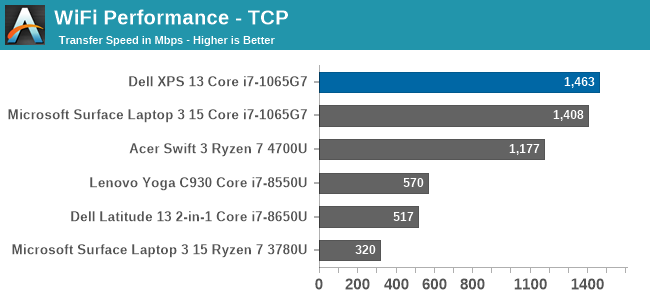
Performance is simply fantastic, and ever since Killer was able to base their network cards on Intel wireless, the stability concerns appear to be a forgotten memory. There was not a single time that the laptop had any issues with its network connection during any of the testing. That was certainly not the case on some of the older Qualcomm-based Killer products.
Audio
Dell offers Waves MaxxAudio Pro stereo speakers, at 2.5 Watts peak each, which are outfitted on the bottom of the laptops right on the edge of the device.
Sound quality is a bit on the tinny side, with not a lot of low end at all. The speaker setup does get quite loud though, with 83 dB(A) measured one inch over the trackpad at maximum volume. There was little to no distortion at peak volume either.
The dual-microphone array is found on the very top of the bezel, which would allow it to work with the device closed. It is a great way to hide the holes, with only the 2.25 mm 720p webcam showing in the bezel itself.
Thermals
Dell outfits the XPS 13 with dual fans and a single heatpipe to cool the 15-Watt Thermal Design Power of the Core processor under the hood. They have added hidden exhaust vents in the hinge, to allow more airflow without compromising the looks. There is also a layer of GORE thermal insulation under the keyboard, which helps keep that portion cool to the touch even under load.
To see how the XPS 13 performs under load, it was run at 100% for an extended period while monitoring the device.
This graph tells an interesting story, unlike most laptops we see. First, Dell has gone absolutely crazy with the PL2 level on the XPS 13, with a peak measurement of a whopping 42 Watts. But, that is not sustainable in a 13-inch laptop, and the CPU throttles in PL2 until it reaches the PL1 limit, which is right at 15 Watts in the XPS 13’s most performant mode. Most of the notebooks we have tested tend to allow a PL1 level above this, with maybe 20-21 Watts as a constant, but Dell clamps to 15 Watts, then spikes back up when the thermals allow, so we see this see-saw effect of the device running between 15 and 30 Watts. This is similar to how the XPS 13 2-in-1 behaved, and it would be nice to see the company address this with a more consistent power delivery under sustained load.
Over the duration of the test, the device averaged 18 Watts of draw, with an average CPU temperature of 80°C, with the four cores running at 2100 MHz. During this extended run, the noise level was very restrained, only hitting around 44 dB(A) measured about one inch over the trackpad. The GORE thermal insulation also did its job, with the keyboard deck remaining cool.
Software
Dell’s included software suite is a very polished set of applications, allowing the user to quickly get the device set up, adjusted, and of course, contact support. As with most manufacturers, they include a utility to get the latest updates, called Dell Update, and that includes some maintenance utilities as well.
Dell’s Power Manager software allows you to change the power profile, as well as adjust the battery charging. The Thermal Management tab allows you to pick a fan and CPU profile, or leave it as the default Optimzed setting which works well for most scenarios.
Dell offers a plethora of battery options to maintain and extend the life of the battery. Out of the box, it comes in an “Adaptive” setting which learns your usage patterns and tries to keep the battery at a good state of charge, but you can override that to keep the battery always at 100% charge in case you need it, or if you mostly use it on AC you can set it to keep the battery to a lower level of charge to prolong its life.
The days of laptops being saddles with an almost unending array of shareware and trial software seem to be mostly over, and even though Dell included Norton with the XPS 13, it can easily be removed if necessary.


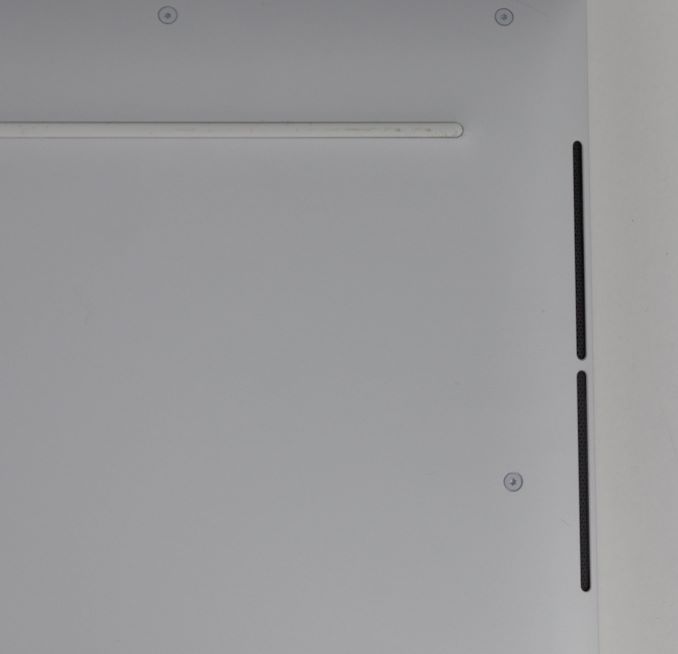
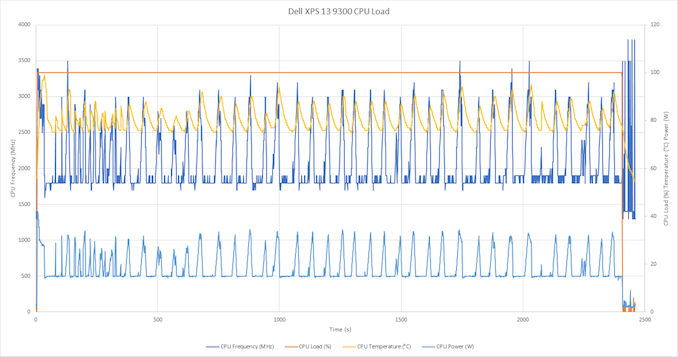
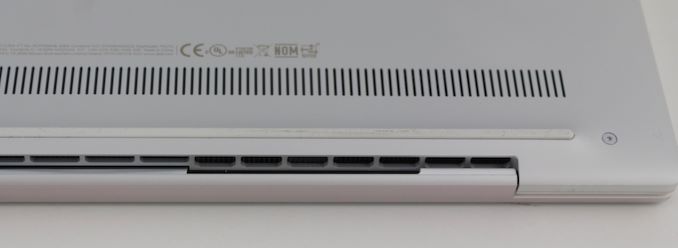

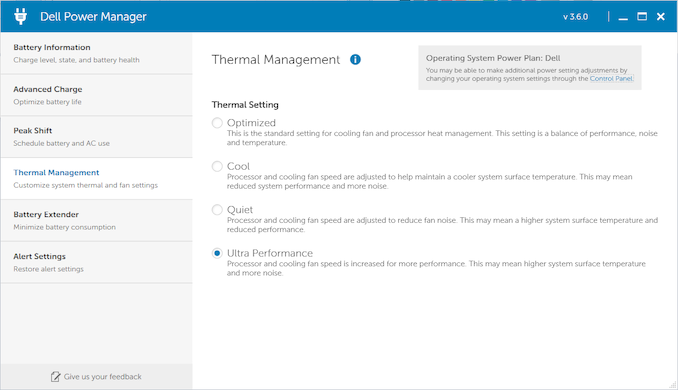
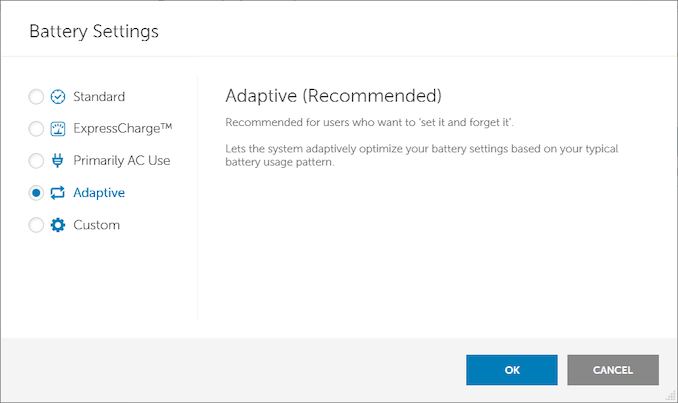








224 Comments
View All Comments
sorten - Thursday, July 16, 2020 - link
eek: Here's a review comparing a $600 Acer laptop with the 4700u (not AMD's top mobile CPU) against an XPS 13 with the Intel 1065G7, and it's not pretty. Tiger Lake is supposed to have a massively improved GPU (Intel's new Xe brand), but we don't know much about the CPU side yet.https://www.anandtech.com/show/15762/the-acer-swif...
Deicidium369 - Thursday, July 16, 2020 - link
The CPU side of Tiger Lake - 4 cores is 17% slower than AMD Renoir 8 cores. Xe LP (the 96 EU iGPU in Tiger Lake) is equal to the MX350 from Nvidia.Santoval - Friday, July 17, 2020 - link
According to unverified leaks. I await for actual performance values, while being skeptical that Intel managed to raise the IPC (and/or clocks) of Tiger Lake so much over Ice Lake (I obviously refer to the CPU block, not the iGPU block; I have no doubt that Xe will outperform AMD's Vega iGPUs - that is AMD's choice for having a 3-year old GPU design compete against Intel's latest and greatest Xe GPU, in an act of apparent self-sabotage).gescom - Friday, July 17, 2020 - link
Lenovo ThinkPad T14s: AMD Ryzen 7 Pro 4750U leaves Intel in the dust.Notebookcheck.net
Jorgp2 - Thursday, July 16, 2020 - link
Again why are shilling?Who thinks a craptop vs an Ultrabook is a valid comparison.
Lord of the Bored - Friday, July 17, 2020 - link
I think the point is that the AMD processor being used in the craptop is kinda wrecking Intel's "solid" and "competitive" offerings.PeterCollier - Friday, July 17, 2020 - link
So AMD catches up with Intel after Intel falls behind by 4 years with their 10nm process. Big __ deal.Korguz - Friday, July 17, 2020 - link
the bigger deal, intel STILL hasn't regained its lead during the same timeframe.Spunjji - Friday, July 17, 2020 - link
@Jorgp2 It's kind of funny that your argument is "It's okay for Ultrabooks to be slower than craptops". The comparison is not only valid, it's *damning*. There shouldn't be any reason why you can get that performance from a junk notebook but not in the #1 Ultrabook design.Jorgp2 - Friday, July 17, 2020 - link
Because you're comparing a $300 craptop to an Ultrabook.Of course the craptop is going to be cheaper.